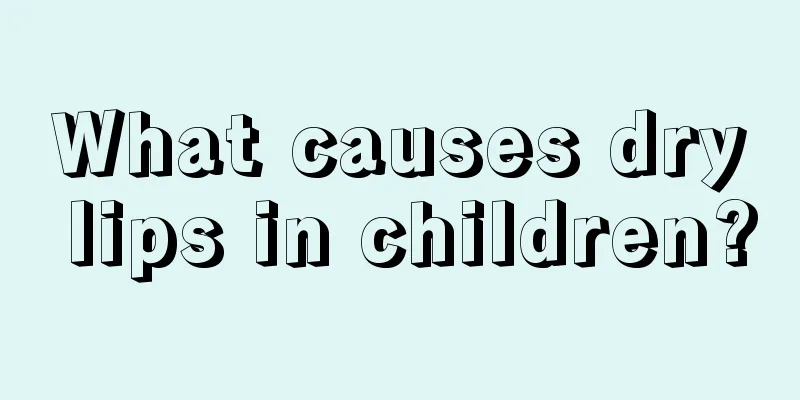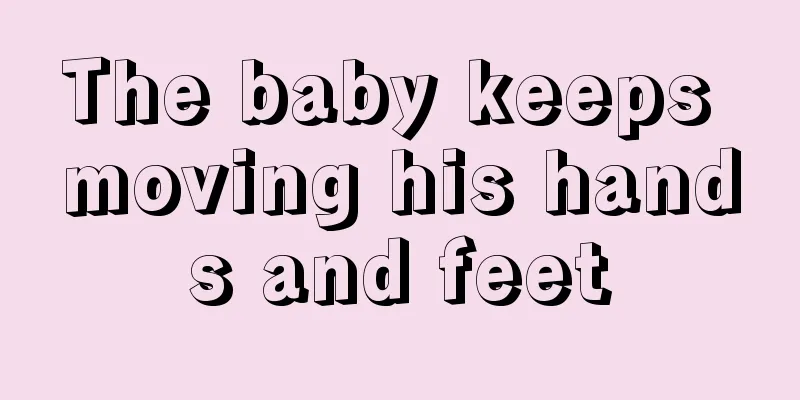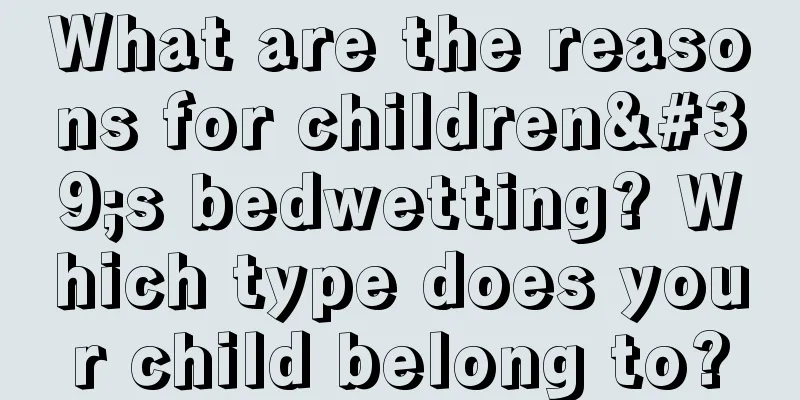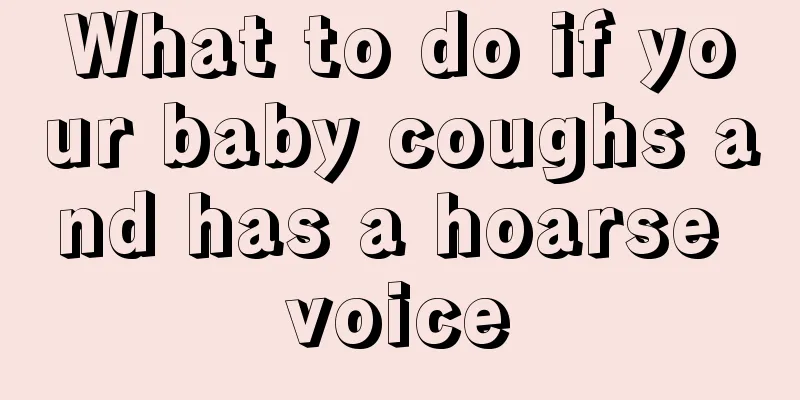What to do if a child has a burn or fever
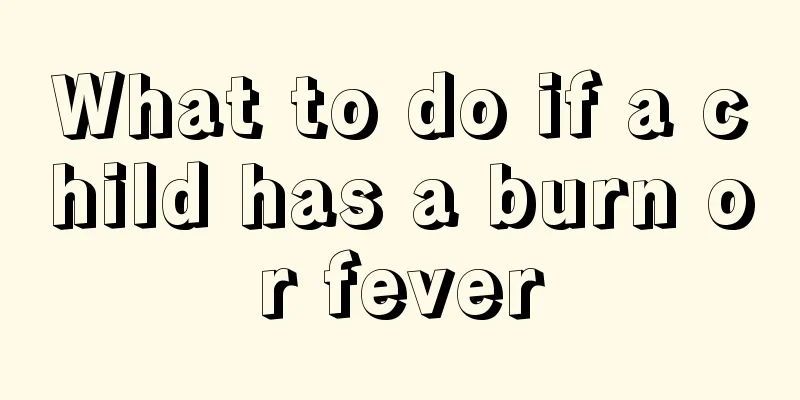
|
If there is a baby at home, parents must be careful to remove all objects that may be threatening to the baby, and not place them too close to the baby or within the baby's reach. Even so, accidents always happen in life, and some babies may be burned or scalded. Therefore, parents must do a good job of protection and take good care of their children. So, what should we do if a child has a burn and a fever? Children's burns may lead to infection, and they will naturally have a fever after the infection. It is recommended to go to the hospital for treatment, as it is very easy to get infected after a burn. What should I do if my child is burned? Step 1: Cool down. When the baby is scalded by hot water while wearing clothes, if you cannot take off the clothes immediately, let the baby soak in the bathtub first and then take off the clothes, or cut the clothes with scissors and remove them. Then rinse with plenty of tap water, or use a washbasin to scoop water from the basin or bathtub to soak the scalded area to cool the wound. The cooling time is about 30 minutes to 1 hour. Note: If the burn is severe and there is an obvious red and seeping wound surface (the epidermis has been burned off) when you remove your clothes, do not rinse it with tap water to avoid infection; do not put ice directly on the wound to cool it down to avoid frostbite of the skin tissue. When the wound area is too large, the baby's body is susceptible to cold, so it is best to take a short rest before continuing the cooling work. Cooling down with cold water can not only slow down the rate of tissue damage caused by burns, but also has an analgesic effect. Step 2: Send the package to the hospital After the baby's temperature drops, cover him/her with a sterile cloth, a clean handkerchief or gauze and send him/her to the hospital for treatment. Be careful not to apply any external medication to avoid wound infection. Even if the baby has only suffered minor burns, it is best to go to a hospital with a burn plastic surgery department for treatment. The first step for chemical burns: rinse. No matter what chemical it is, once the baby is injured, rinse the injured area immediately with running water for at least 60 minutes. Never soak your baby's injured part in water, as the chemicals may spread and cause more serious injuries. If the eyes are affected, hold the baby's eyelids open and rinse continuously with plenty of clean water (preferably sterile water). Step 2: Go to the hospital immediately. Chemical burns usually require immediate hospital treatment, so while you are doing emergency treatment for your baby, if there are people around who can help, you should immediately call the emergency number and ask the hospital to send an ambulance to pick up the baby to shorten the treatment time as much as possible. Contact burns usually have a relationship between the depth of the baby's injury and the temperature of the object in contact and the duration of contact. Low temperatures but long contact times can also cause deep wounds. If only the skin is red or has blisters (degree I, shallow degree II), the patient needs to be flushed and soaked in water before being sent to the hospital for treatment. Be careful not to break the blisters on your own. If the skin is charred black or turns waxy white, it is a sign of deep burns and you do not need to flush or soak the skin in water and can be sent directly to the hospital. The first step for fire burns: extinguish the fire. When the baby is on fire, cover him/her with a quilt or a large sheet. Do not let the baby run to avoid fueling the fire. If the baby can understand what is said, parents can immediately let the baby lie down on the ground with his hands covering his face. After lying down, let the baby roll continuously or parents can go over and wrap the baby with a large cloth to put out the fire. Step 2: Cooling After the fire is extinguished, if the baby is wearing clothes, you can follow the above method, let the baby soak in the bathtub first and then take off the clothes, then soak the burned area with water in the washbasin, scoop basin or bathtub, and rinse with plenty of tap water to cool the wound. The cooling time is about 30 minutes to 1 hour. Step 3: Send to hospital Babies with large burn areas or younger children should not be soaked for too long to avoid excessive drop in body temperature causing shock and delaying treatment. Especially when the baby is unconscious or cannot be woken up, send him to the hospital immediately. If the baby accidentally gets electric shock at home, what should parents do? The first thing to do is to cut off the power supply immediately and then perform cardiopulmonary resuscitation. Especially if the baby is unconscious, be sure to check his breathing and heartbeat first. If the heart stops beating, parents must send the child to the hospital as soon as possible or call 120 for help. There cannot be any delay. |
<<: What should newborns eat for indigestion?
>>: Diet therapy for children with lung heat and cough
Recommend
What to do if children accidentally swallow chewing gum
Chewing gum, a product we use to clean our mouth....
Is startle tics hereditary?
There are many emotions in the human heart, and f...
Can children eat passion fruit?
The nutritional value of passion fruit is relativ...
How to treat children’s sore throat with pus?
Many children often suffer from sore throats. Sor...
Can white rash on children be cured?
Pityriasis alba is a skin disease that is more co...
The child is more than eight months old and cannot sit. His neck bone is very soft.
Because babies are not very developed right after...
What should primary school students eat to nourish their brains?
Children are in a critical period of growth and d...
How to treat rubella in a seven-month-old baby
Some parents will find that their baby has contra...
Treatment for excessive tearing and mucus in babies
Babies' tears and eye mucus look very scary. ...
Is it normal for children to shed tears when they have a cold?
Cold is a common disease in winter. This kind of ...
Treatment for children's cough
Children's immunity is generally weak, and th...
Four-month-old baby's feet sometimes shake
As the baby grows, it is necessary to carefully o...
Tips to get rid of diapers at night
The baby's skin is very delicate and can be e...
Why are children picky eaters
After one year old, my son will enter an importan...
What are the symptoms of milk allergy in children?
Children are in a critical period of physical dev...
